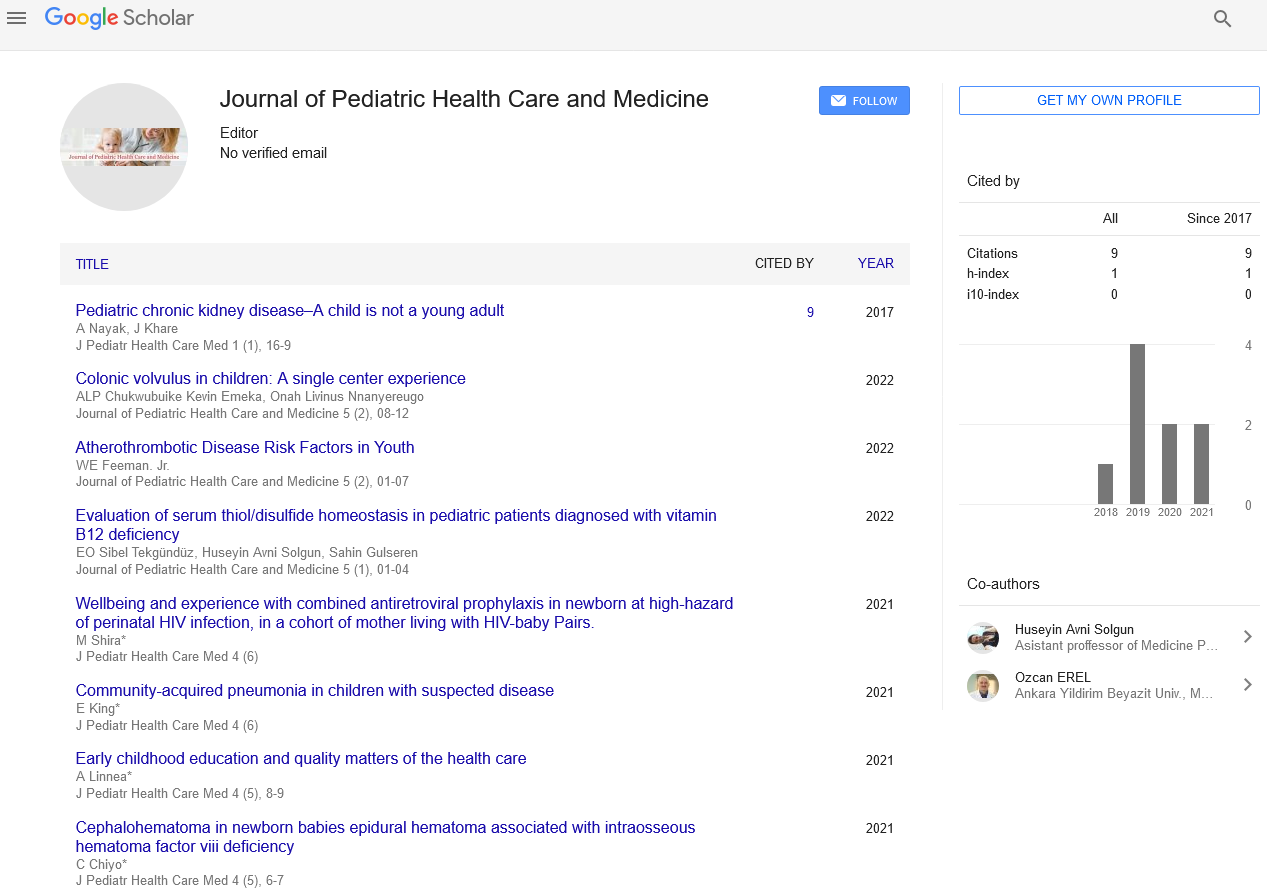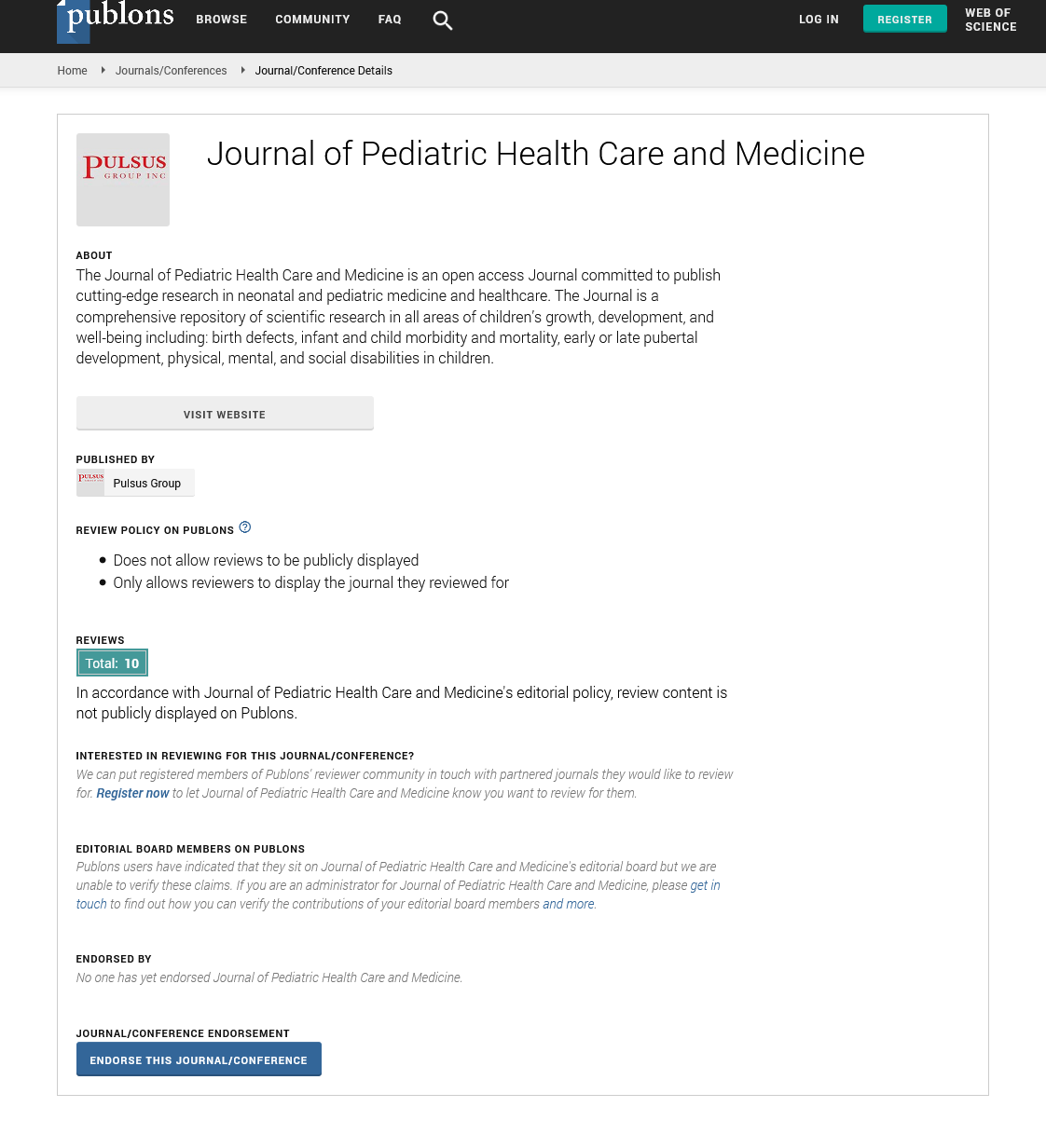Kin molding interactive abilities in youngsters with mental imbalance range issue
Received: 01-Nov-2022, Manuscript No. puljphcm-22-5596; Editor assigned: 06-Nov-2022, Pre QC No. puljphcm-22-5596 (PQ); Accepted Date: Nov 26, 2022; Reviewed: 16-Nov-2022 QC No. puljphcm-22-5596 (Q); Revised: 24-Nov-2022, Manuscript No. puljphcm-22-5596 (R); Published: 03-Dec-2022
Citation: Monte R. Kin molding interactive abilities in youngsters with mental imbalance range issue. J Pediatr Health Care Med. 2022;5(4):01-02.
This open-access article is distributed under the terms of the Creative Commons Attribution Non-Commercial License (CC BY-NC) (http://creativecommons.org/licenses/by-nc/4.0/), which permits reuse, distribution and reproduction of the article, provided that the original work is properly cited and the reuse is restricted to noncommercial purposes. For commercial reuse, contact reprints@pulsus.com
Abstract
Chemical imbalance Range Problem has been related to aggravations in correspondence, socialization, and conduct. These kids are restricted in their ability to frame peer connections, restricted in scholastics, and unfit to make due their everyday exercises all alone. Kin, being the ones with whom kids have the first and most significant relationship, have a huge influence on the social and play conduct of these kids and may end up being the social specialists through which kids progress.
Key Words
Chemical imbalance; Mental imbalance; Neuroformative problems
Introduction
The Chemical imbalance is the prototypical type of a range of related, complex, neuro-formative problems alluded to as chemical imbalance range problems, otherwise called unavoidable formative issues. It is described by abnormal improvement in socialization, correspondence, and conduct. Unequivocally one-sided towards guys with a male-to-female proportion of for exemplary mental imbalance [1]. The exact etiology of remains obscure. Late examinations recommend the programming consequences for the creating posterity, coming about because of upsetting encounters, maternal eating regimen and contaminations, high-level parental age, rashness, and low birth weight - to give some examples - could act through epigenetic components bringing about basic determinants of sickness inclination. Kids with can’t understand the considerations and sensations of others or foresee get-togethers. They experience issues starting cooperation’s, answering others, and keeping up with discussion. They show deficiencies in tuning in and answering others' solicitations and in participating in games and different exercises. Hindered interactive abilities lead to dismissal and renunciation by companions, friends, and grown-ups and to dejection and separation [2]. These, thusly, lead to feeble scholastic advancement, social disappointment, nervousness, discouragement, misuse, deterrents to social connections, and social confinement. For families with kids with, the kin relationship can be the first and most serious companion relationship. Stalker what's more, Connors found a more significant level of compassion and persistence in kin of kids with contrasted with kin of youngsters with different handicaps. It was found that context oriented factors, for example, information about a youngster's inabilities and adapting styles impact relationship among kin. Families with additional individuals can share the obligation of really focusing on a kid with. In such families, kin connections address warm connections and a propensity of the kin to show interactive abilities to the youngster with through play [3]. This further works on the social as well as play abilities of the kid which are hindered. Nonetheless, a couple of studies have likewise found a pessimistic effects of kin connections, for example, sensations of humiliation and envy of the guardians center their consideration more on the kid. Smith and Hart expressed that kin connections assume a critical part in the improvement of how youngsters might interpret the feelings and contemplations of others. Revealed that positive kin connections can be a significant wellspring of social advancement and self-esteem. Additionally, kin are significant social specialists for kids. Presumed that claim to play worked kids with additional kin. Likewise, more established kin will generally have an improved impact as they participate in imagine play more regularly. Kin connections in mentally unbalanced kids are stamped by less favorable to the social way of behaving and less quarreling and rivalry[4]. In any case, this additionally suggests less sure collaborations and less valuable chances to arrange questions. concentrated on the impacts of orientation on the kin of mentally unbalanced youngsters and saw that kids with something like one inverse orientation kin performed better compared to youngsters with just same-orientation kin. The debilitations of social connection, correspondence, and conduct will generally turn out to be less serious over the long haul. It might lead to further developed kin connections over the long haul. The more tenacious the kin are in their endeavors, the better interactive ability improvement in kids. Proof backings improvement of interactive abilities in kids with interactive abilities preparation. Peer connections have additionally been concentrated exhaustively [5]. Notwithstanding, writing is scant on how the presence of kin might impact the kid concerning correspondence, social way of behaving as well as play abilities. In this way, there is a need to concentrate on the relationship of kin as a wellspring of upgrade towards superior personal satisfaction for youngsters.
References
- Brent DA, Crumrine PK, Varma RR, et al. Phenobarbital treatment and major depressive disorder in children with epilepsy. Pediatrics. 1987;80(6):909-17.
- Davison JC. Attention deficit/hyperactivity disorder: Perspectives of participants in the identification and treatment process. J Educ Thought (JET)/Rev Pensée Educ. 2001;35(3):227-47.
- Walsh WJ, Isaacson HR, Rehman F, et al. Elevated blood copper/zinc ratios in assaultive young males. Physiol behav. 1997;62(2):327-9.
- Smart JM, Kemp AS. Increased Th1 and Th2 allergen‐induced cytokine responses in children with atopic disease. Clin Exp Allergy. 2002;32(5):796-802.
- Gee JP. Critical issues: Reading and the new literacy studies: Reframing the national academy of sciences report on reading. J Lit Res. 1999;31(3):355-74.






